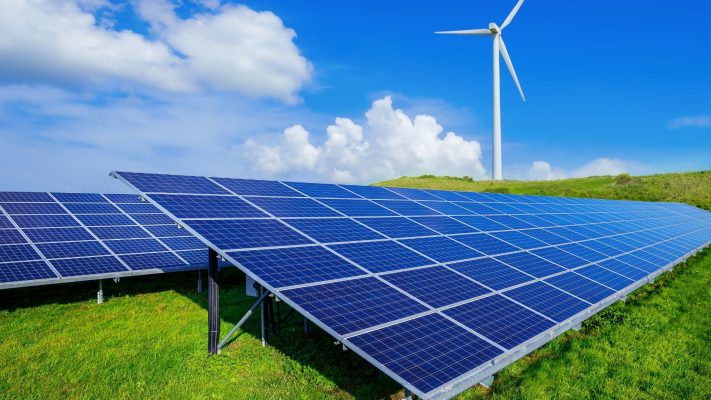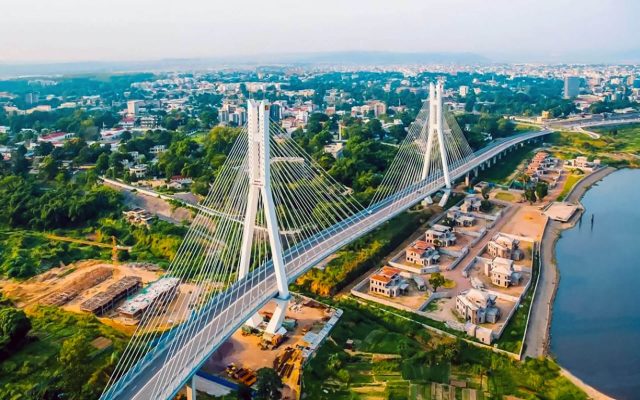The Dual Path to Sustainability:
How the Republic of Congo Is Leveraging Both Fossil Fuels and Renewables to Bolster Energy Security
Carl Mbeng | Principal Consultant, Energy Extractives & Climate Specialist | Email: carl@resourceprime.com
Navigating Rising Power Demand and Shifting Regional Market Dynamics
In recent years, citizens of the Republic of Congo (RoC) have faced an unprecedented power crisis that has had a terrible impact on the entire economy, affecting businesses and residents ultimately creating significant uncertainty in terms of energy security. Even though the country is said to have made significant investments in power infrastructure through public and private sector partnerships, the quality of service for electricity has significantly deteriorated raising legitimate questions about the effectiveness of these investments.
According to one senior government official, the ongoing crisis that was at its peak in 2023 can be attributed to, rapid urbanization of Brazzaville and Pointe-Noire, delays on the construction of other power plants, deterioration of grid, especially the interconnection with the Democratic Republic of Congo (DRC) grid, where even minor disturbances in one country can trigger widespread disruptions in both, and gas supply issues at the country’s main power plant, which accounts for 72% of electricity production. In addition, RoC has witnessed a significant reduction in the quantity of electricity imported from the Democratic Republic of the Congo (DRC) as the latter is no longer ins a position to supply the initial agreed quantities and there are some quality issues also when the power reaches the Mbouono substation in Congo-Brazzaville, is crushed by the load [1].
RoC has long relied on fossil fuels, particularly natural gas, as the backbone of its electricity generation sector. Hydropower on the other hand is said to account for over 25% of the energy generation capacity. These resources have played a critical role in powering industries, generating revenue, and maintaining energy security. Notwithstanding, the national electricity access rate stands at 50.6% with a stark urban–rural divide (12.4 % rural access). As the global energy landscape shifts toward adopting alternative sources of power generation to ensure a dual path to sustainability, RoC has a unique opportunity to harness its abundant resources by integrating alternative energy solutions, including small hydropower, solar, biomas and biogas projects.

Image: Image used for illustrative purposes. Source: Canva.com
The Current Energy Landscape and the Role of Renewable Sources in the Republic of Congo
The Republic of Congo (RoC), with a population of 5.7 million, is rich in natural resources, including significant hydropower potential estimated at 2.5 GW, of which less than 5 percent is currently exploited. The national electricity access rate is estimated at 50.6 percent, with a stark urban–rural divide (12.4 percent rural access). RoC has made progress in the energy sector, increasing its installed capacity from 325 MW in 2017 to 410 MW in 2019.
As of mid-2024, RoC’s key generation sites include the Imboulou dam (85 MW), Moukoukoulou dam (74 MW), Ndjeno power station (25 MW), and the Centrale Electrique du Congo (CEC) Gas Turbine power plant, which has a capacity of 484 MW and is located in Kouilou. Whether or not these are all operating at full capacity is uncertain.
However, the last major infrastructure investment occurred before 2014. Despite this, the national electricity access rate remains at 50.6 percent, with a significant disparity between urban and rural areas (12.4 percent rural access).
The Adoption of Renewable as in Alternative Energy Source
Rather than viewing fossil fuels and renewables as opposing forces, the Republic of Congo (RoC) is integrating them to create a more resilient and sustainable energy system. The RoC government hopes this approach will enhance its energy resilience, meet climate commitments, and create a diversified energy mix that is both secure and future-proof. The current strategy seeks to open the market for the private sector to develop small hydropower, solar, biogas and biomass projects, providing a pathway to cleaner energy without compromising reliability.
By utilizing fossil fuels as a stabilizing force while ramping up renewables, RoC can ensure energy security, economic stability, and long-term sustainability, especially in rural communities. So far, the notable renewable energy projects include;
Tinda Energy’s 65 MW renewable energy initiative in the Ignié Special Economic Zone (SEZ) will generate 55 MW from a hybrid solar plant and 10 MW from a biomass facility. Set for completion within 18 months, the project will cover a 100-hectare site dedicated to renewable energy development within the SEZ.
- Blue Energies Congo is developing a gasification project aimed at reducing diesel dependence, particularly in forest exploitation where foresters currently use diesel generators, accounting for 5% of the national fuel consumption. By replacing diesel generators with electricity generated from biomass, the project seeks to reduce pressure on fuel imports and mitigate the risks of shortages.
Eni’s integrated energy project in the Republic of Congo aims to bring electricity to 33 community facilities, including 11 health centers and 22 drinking water wells, powered by solar panels.
UAE renewable energy company AMEA Power’s project to develop 100 MW solar photovoltaic project, the first large-scale solar initiative in the country.
Other interesting projects and initiatives are described below;
Potam@i Hydrolienne Project:This project involves the installation of a turbine on the riverbanks of the Congo River. Led by Potam@i, the turbine produces 10 kW of electricity continuously throughout the year. Additionally, Potam@i operates a solar powered hub called the Essential Service Unit (ESU), which utilizes this energy from the turbine and some solar panels to provide useful and accessible products and services to the inhabitants of three villages, serving around 3,000 people. The system ensures power supply for lighting, water production, and maintaining the cold chain during any interruptions in the turbine’s operation.
- In 2023, the country inaugurated its first renewable energy research center in Oyo, focusing on applied research to develop the potential of hydropower, biomass, wind, and solar energy. This center is a result of cooperation between the Congolese government, Italian energy major Eni, and the UN Industrial Development Organization. The Oyo center exemplifies the country’s commitment to diversifying its energy mix and creating an integrated energy value chain that leverages both renewable and oil and gas resources.
- Italy’s Mattei Plan for Africa aims to strengthen renewable energy investment and development in Africa. This plan emphasizes diversifying the country’s economy towards renewable energy, sustainable agriculture, and climate adaptation while reducing reliance on fossil fuels. By channeling financing through the Italian export credit agency Società per Azioni per il Credito all’Esportazione and the Italian Climate Fund towards green projects, Italy seeks to foster non-oil sectors and assist Congo in implementing tax reforms and climate resilience.
- World Bank: On June 26, 2024, the World Bank approved a $100 million program for the Strengthening Electricity Services (PASEL) program. This initiative seeks to improve the quality of service delivery and provide greater access to electricity to boost the economy and improve the quality of life for the people of the Republic of Congo.
- European Union Support to improve the legal framework for renewables: Since 2022, the EU has been supporting renewable energy and rural electrification. The EU has launched a technical assistance mission that will start next year, working with all stakeholders to roll it out, including biomass initiatives. The EU aims to improve the framework for renewable energy by supporting all aspects of regulation and laws to create an attractive regulatory environment. This is the main support from the EU. The EU is also addressing issues of biomass energy and sustainability, supporting various initiatives around clean cooking.
Key Recommendations for Improving Renewable Integration
The incorporation of alternative energy in RoC is impeded by a complex policy environment characterized by the interplay of international green policies and local governance challenges. To achieve this the following are needed:
Establish clear and efficient frameworks for developing energy through alternative sources by implementing regulatory and policy instruments. The Ministry of Energy and Hydraulic Resources (MEHR) must collaborate with the Electricity Sector Regulator, the Rural Electrification Agency, and other stakeholders to implement instruments that will modernize regulations and improve sector performance. The frameworks developed should also address issues related to taxation and customs, as well as third-party access to the grid. Additionally, tariff setting methodologies for mini-grids and the establishment of standard financial models are necessary to attract private investments.
Good governance is essential for advancing renewable energy in RoC. It involves establishing transparent regulatory frameworks, attracting private investments through financial models and tariffs, enhancing institutional capacity, promoting equitable resource distribution, and ensuring environmental protection. These measures collectively foster a resilient and sustainable energy system.
Capacity building is crucial for integrating renewable energy in RoC, especially for government staff. Enhancing the skills and resources of governmental institutions ensures effective enforcement of regulatory frameworks. Training personnel, improving infrastructure, and allocating sufficient budgetary resources empower staff to implement and oversee renewable energy projects, fostering a sustainable energy transition.
Conclusion
The Republic of Congo’s dual path to sustainability, leveraging both fossil fuels and renewables, presents a promising model for bolstering energy security while advancing towards a sustainable future. This approach not only addresses immediate energy needs but also lays the groundwork for long-term resilience and environmental stewardship.
To fully realize this vision, collective action from policymakers, private sector stakeholders, and development partners is essential. Policymakers must continue to refine and implement robust legal and institutional frameworks that facilitate renewable energy projects and ensure regulatory compliance. Private sector stakeholders should be encouraged to invest in innovative energy solutions and infrastructure that support both fossil fuels and renewables. Development partners, including international organizations and donor agencies, must provide technical assistance, financial support, and capacity-building initiatives to strengthen the energy sector.
******
Navigating the complexities of renewable energy project development requires expert guidance. At ResourcePrime, we provide tailored regulatory, policy, and technical advisory services to help you successfully plan, finance, and implement sustainable energy solutions.
Get in Touch Today! Whether you’re a developer, investor, or policymaker, our team is ready to support you at every stage of your mini-grid project.
Contact us at info@resourceprime.com or visit www.resourceprime.com to learn more! Let’s power sustainable growth together.
**********
Footnotes
[1] This is according to an interview given by the Jean Bruno Danga Adou, Director General of d’Energie électrique du Congo (E2C), on the 26th of December 2023, Congo – Coupures d’électricité : Jean Bruno Danga Adou n’est plus écouté même lorsqu’il dit la vérité.
